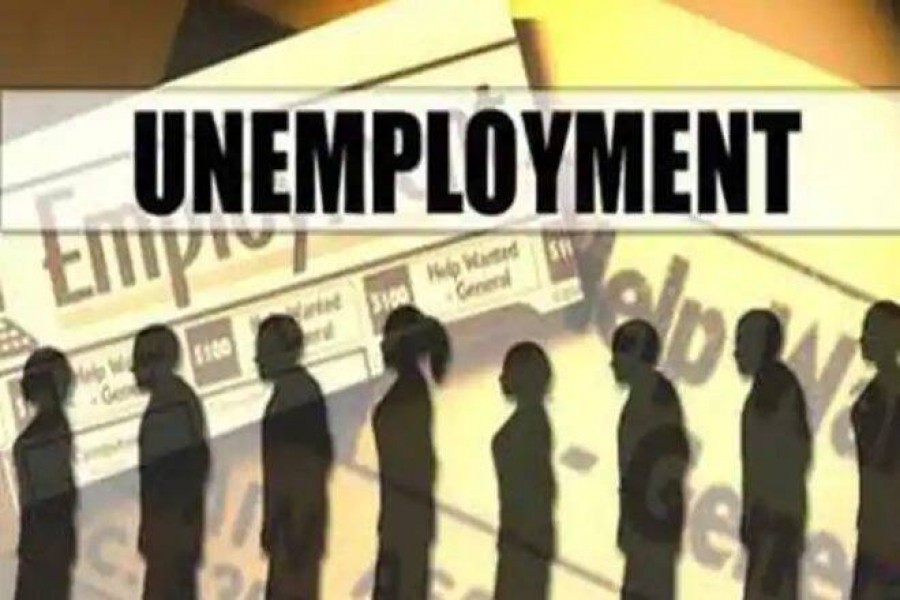Bangladesh's unemployment rate increased by 1.1 per cent to 5.3 per cent in 2020 mainly due to the Covid-19 pandemic that created a labour market crisis globally, according to a new assessment by the International Labour Organization (ILO).
The world unemployment rate reached 6.5 per cent last year, up from 5.4 per cent of the pre-pandemic year of 2019, it showed.
The rate is much higher in India - 7.1 per cent, up by 2.2 per cent from 2019, according to the ILO report 'World Employment and Social Outlook: Trends 2021 (WESO Trends)', published on Wednesday.
Pakistan, Nepal and Bhutan also witnessed an upward trend of unemployment rate by 0.7 per cent, 1.3 per cent and 1.4 per cent respectively during the period.
The pandemic-induced world labour market crisis is far from over and employment growth will be insufficient to make up for the losses suffered until at least 2023, it also projected.
The WESO Trends also revealed that in 2020 weekly working hours in Bangladesh decreased by 3.5 per cent to 25.1 per cent in a year.
Some 44.3 per cent people in Bangladesh, aged 15 years and older though the working age population varies from country to country, were not in the labour force in 2020. The rate was 40.9 per cent in 2019, according to the ILO report.
Meanwhile, a recent joint report by the Center for Policy Dialogue and the Bangladesh Institute of Labour Studies (BILS) also found that the Covid-19 pandemic had rendered about 3.0 per cent of the country's labour force jobless and created an estimated 16.38 million 'new poor'.
Day-labourers, numbering about 1.08 million, working in construction, informal services and transport, lost jobs, it said.
Small and medium enterprises and the informal sector would face the highest number of job losses at the end of 2021, it predicted, suggesting effective social dialogues for ensuring the recovery of the labour market during this trying time.
The WESO Trends, however, said slow jobs recovery and increased inequality risk long-term Covid-19 scarring. It highlighted the danger of a Covid-19 labour market legacy of increased geographic and demographic inequality, rising poverty and fewer decent jobs.
The report also projected that the global crisis-induced 'jobs gap' would reach 75 million in 2021, before falling to 23 million in 2022.
The related gap in working-hours, which includes the jobs gap and those on reduced hours, amounts to the equivalent of 100 million full-time jobs in 2021 and 26 million full-time jobs in 2022.
"This shortfall in employment and working hours comes on top of persistently high pre-crisis levels of unemployment, labour underutilization and poor working conditions," said the report.
In consequence, global unemployment is expected to stand at 205 million people in 2022, greatly surpassing the level of 187 million in 2019.
This corresponds to an unemployment rate of 5.7 per cent. Excluding the Covid-19 crisis period, such a rate was last seen in 2013.
Global employment recovery is projected to accelerate in the second half of 2021, provided that there is no worsening in the overall pandemic situation, it said.
"However this will be uneven, due to unequal vaccine access and the limited capacity of most developing and emerging economies to support strong fiscal stimulus measures," it said adding furthermore, the quality of newly created jobs is likely to deteriorate in those countries.
The fall in employment and hours worked has translated into a sharp drop in labour income and a corresponding rise in poverty.


